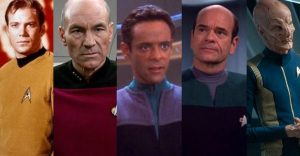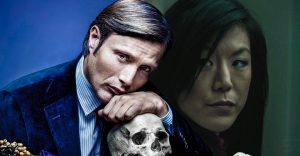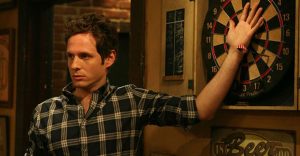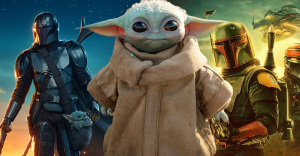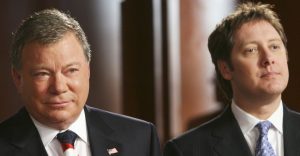Every Frankenstein Movie Ranked, Worst To Best
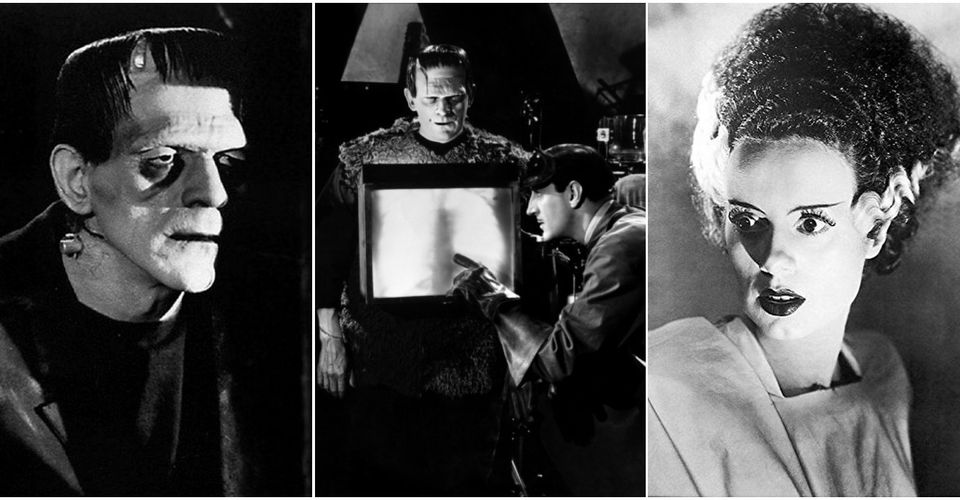
James Whale’s Frankenstein was a huge hit for Universal in 1931. The film was one of the first in a series of monster movies produced by the studio, creating a franchise that encompassed eight titles featuring characters and themes from the original. Here’s how every film in the series ranks, worst to best.
Universal Pictures enjoyed great success in the silent film era with several horror films based on classic literature. Their first official monster feature, under their original name IMP, was Dr. Jekyll and Mr. Hyde in 1913. Other popular monster films from the silent era included 1923’s The Hunchback of Notre Dame and 1925’s Phantom of the Opera, both starring “The Man of a Thousand Faces”, Lon Chaney. In 1931, Universal released Dracula—which is being rebooted as of 2020—the first sound version of the Bram Stoker novel. Audiences embraced the Tod Browning film, which created a much-needed hit for the floundering studio, prompting them to look for other horror properties to turn into movies.
Frankenstein, based on the classic Mary Shelley novel, was quickly put into production. Directed by fledgling director James Whale, the movie starred Colin Clive as Henry Frankenstein and Boris Karloff as “the monster”. It was an instant hit, creating a popular franchise that would haunt theater screens for years. Whale would return to direct Bride of Frankenstein in 1935, a film regarded just as highly as the original. Son of Frankenstein, released in 1939, would prove a popular film as well, though subsequent sequels would be hit and miss. After The Ghost of Frankenstein was released in 1942, each subsequent film featured additional monsters to ensure audience interest.
8. The Ghost of Frankenstein (1942)

The Ghost of Frankenstein was the fourth film in the series, and the first not to feature Karloff as the monster. Lon Chaney Jr. adds to his long list of monster portrayals, which included the Mummy in The Mummy’s Tomb—released the same year—by taking over the role. While the movie picks up where Son of Frankenstein left off, it contains none of that film’s sense of fun or intelligence. Ygor, in another great performance by Bela Lugosi, discovers the monster weakened, yet alive, by his fall into the sulfur pit. They go in search of Dr. Frankenstein’s heretofore unmentioned younger son, Ludwig (Cedric Hardwicke), in the hopes that he can help aid in the monster’s recovery. A derivative plot and uninspired direction by Erle C. Kenton make this the weakest of the series.
7. House of Dracula (1945)

Kenton was back in the director’s chair for the third time in this nonsensical continuation of sorts to House of Frankenstein. The plot is driven by Count Dracula (John Carradine) who visits the castle of Dr. Edelmann (Onslow Stevens) hoping to find a cure for his vampirism. Lazy plotting brings Larry Talbot (Lon Chaney Jr.) to the castle the same night looking for a cure for his lycanthropy. While there are few interesting scientific aspects that Edelmann discovers concerning the nature of the cursed characters, these elements go nowhere. Frankenstein’s monster, played by actor Glenn Strange for the second time, doesn’t figure much into the story. House of Dracula is a last gasp for the serious Universal monster match-ups, and one of the least compelling.
6. Abbott and Costello Meet Frankenstein (1948)

Director Charles Barton brings a light touch to this fun continuation of the monster saga. Wisely side-stepping the events of House of Dracula, the plot this time revolves around Dr. Sandra Mornay (Lenore Aubert) who is working with Dracula (Bela Lugosi) to create a more docile Frankenstein’s monster (Glenn Strange) for nefarious purposes. Baggage clerks Chick (Bud Abbott) and Wilbur (Lou Costello) get caught up in the drama when they deliver crates carrying Dracula and the monster to a wax museum. Larry Talbot, played by Lon Chaney Jr. for the last time, also figures into the convoluted plot, which is just an excuse to put Abbott and Costello into comedic jeopardy. The choice to treat the monsters seriously works to the film’s advantage; it walks a fine line between classic horror and farce. This was the first in a long line of comedies featuring the duo involved in the Universal monster universe, and the last film to feature the “big three” monsters together.
5. House of Frankenstein (1944)

This direct sequel to Frankenstein Meets the Wolf Man, House of Frankenstein was the first to feature all three classic characters, including Dracula, in the expanding shared monster universe. While the plot is negligible, the cast, which included Boris Karloff as psychotic scientist Dr. Niemann, make this an entertaining ride. Dracula (John Carradine) doesn’t figure much into the plot, which has more to do with Niemann reviving Frankenstein’s monster, played for the first time by Glenn Strange, and the long-suffering Larry Talbot (Lon Chaney Jr.). Niemann and his hunchback assistant (J. Carrol Naish) are out for revenge, and think the monster is the ideal vehicle to help them. Director Earl Kenton—responsible for Ghost of Frankenstein—is back, though this time shows some flair for pacing and suspense.
4. Son of Frankenstein (1939)

Though one of the most underrated titles, this third follow-up was the most handsome and influential of the Universal horror films. Director Rowland V. Lee takes over the directing reigns from James Whale and does a great job with the smart script written by Wyllis Cooper. Henry Frankenstein’s scientist son (Basil Rathbone) moves into his father’s castle along with his wife Elsa (Josephine Hutchinson) and young son Peter (Donnie Dunagan). The young doctor has moved back in the hopes of restoring his father’s damaged reputation. Things go awry when he meets Ygor (Bela Lugosi), a shady blacksmith with a connection to the monster and a plan for revenge. Boris Karloff returns as the unstoppable monster. His scenes with Lugosi are some of the most iconic in the Universal monster universe. It’s great fun, and a worthy follow-up to the engaging Bride of Frankenstein.
3. Frankenstein Meets the Wolf Man (1943)

Written by Curt Siodmak, screenwriter for some of the better Universal monster films, this fun follow-up to both the much-lauded The Wolf Man (1941) and The Ghost of Frankenstein cleverly works with the best aspects of both franchises. When two grave robbers open the Talbot family crypt, they inadvertently awaken Larry Talbot (Lon Chaney Jr.), who ends up traveling to the village of Vasaria where the previous Frankenstein chaos occurred. Hoping to find information to finally cure his lycanthropy, he stumbles upon the remains of Frankenstein’s monster (Bela Lugosi). While the big showdown between the two titans is a bit of a letdown, watching Chaney, who played the monster in the previous film, and Lugosi, who played Ygor, is great fun. Director Roy William Neill does a great job balancing the horror and action set pieces. This was very first monster match-up/multi-verse, and one of the most entertaining of the Universal horror films of the 1940s.
2. Bride of Frankenstein (1935)

Bride of Frankenstein is a terrific follow-up to the original hit, and is often regarded as a better film than its predecessor. While it is equally stunning both in its execution and cinematography, it gets less points here for its anticlimactic handling of the creature’s mate. A clever opening has Frankenstein author Mary Shelley (Elsa Lanchester) explaining to friends at a party that there was more to the original tale. We discover that neither Henry Frankenstein nor his creation perished in the windmill fire at the end of the original film. The nefarious Dr. Pretorius comes to the doctor with the idea of creating a mate for the creature. The reluctant Henry is ultimately blackmailed by Pretorius, agreeing only when his new bride, Elizabeth (Valerie Hobson), has been kidnapped by the creature. A mesmerizing turn by Lanchester, who also plays the creature’s mate, and an intelligent screenplay by William Hurlbut, make this worthy sequel essential viewing. A remake from Universal is in the works as of 2020.
1. Frankenstein (1931)

While Dracula (1931) is often trumpeted as the film that started the Universal monster series, Frankenstein was the true horror champ that year. Dracula is memorable for the great Lugosi performance and gorgeous set design – but it’s not a great film. James Whale’s Frankenstein, remade countless times—including a ‘94 flop—tells a compelling story cinematically through dynamic camera work and masterful direction. Loosely based on Mary Shelley’s novel, the film tells the story of Henry Frankenstein and his creation of life through the reanimated body parts of the dead. Visually creative and disturbing for its time, the film remains an engrossing study in madness and obsession. Kenneth Strickfaden’s iconic scientific lab equipment was reused in countless films, including many of the Universal monster follow-ups.











